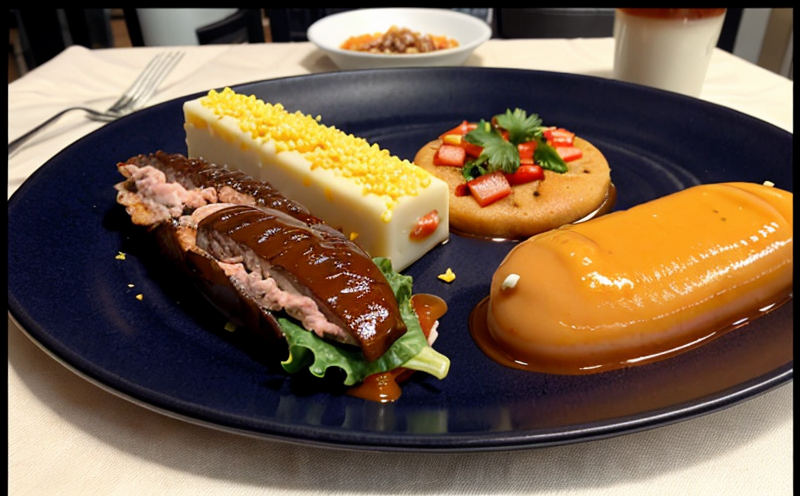ISO 21802-5 Testing for Colorant Migration
The ISO 21802 series of standards provides a comprehensive framework for ensuring the safety and quality of food contact materials (FCMs). Specifically, ISO 21802-5 focuses on the assessment of colorant migration from FCMs into foodstuffs. This test is critical because it helps prevent harmful substances from being transferred to the food during processing or storage.
The importance of this testing cannot be overstated, especially in today’s globalized supply chain environment where suppliers and regulators are increasingly focused on ensuring that all components used in contact with food are safe. Colorants, which can include dyes, pigments, and other additives, must be rigorously tested to ensure they do not leach into the food under normal usage conditions.
The testing process involves exposing the FCM to a simulated food environment for a specified period. During this time, samples are analyzed to determine if any colorants or their breakdown products have migrated into the test solution. The migration limits set forth in ISO 21802-5 are based on international research and are designed to protect consumer health.
The standards outline several key parameters that must be considered during testing, including:
- Temperature conditions (e.g., room temperature, refrigeration)
- Contact time
- Type of food simulants used (water-based or oil-based)
- Simulated food matrix composition
The testing method described in ISO 21802-5 is a standardized procedure that ensures consistency and repeatability. This is especially important for manufacturers who need to demonstrate compliance with regulations across multiple countries.
To prepare the specimens, the laboratory will use samples of the FCM in question. These materials are typically cut into standard-sized pieces or placed in containers that simulate real-world packaging scenarios. Once prepared, the specimens undergo exposure to the specified food simulants under controlled conditions for a set duration.
After the exposure period, the test solution is analyzed using advanced analytical techniques such as High-Performance Liquid Chromatography (HPLC) or Gas Chromatography-Mass Spectrometry (GC-MS). These methods allow for precise quantification of colorants and their breakdown products. The results are then compared against the migration limits specified in ISO 21802-5.
It is important to note that compliance with these standards does not guarantee absolute safety; rather, it provides a level of assurance that the FCMs meet international safety benchmarks and can be used safely in food packaging applications. Manufacturers who adhere to these guidelines are often better positioned to navigate global markets and avoid potential regulatory issues.
The process of ISO 21802-5 testing is not just about compliance; it also plays a crucial role in protecting the brand reputation of manufacturers by ensuring that their products meet or exceed industry standards. This can help build trust with consumers, retailers, and regulators alike.
In conclusion, ISO 21802-5 testing for colorant migration is an essential component of quality assurance programs designed to ensure food safety. By following the procedures outlined in this standard, manufacturers can demonstrate their commitment to producing safe and high-quality FCMs that meet both national and international regulatory requirements.
Quality and Reliability Assurance
The quality and reliability of ISO 21802-5 testing are paramount in ensuring the safety of food contact materials. To achieve this, our laboratory employs state-of-the-art equipment and follows strict protocols that adhere to international standards. Our team of experienced scientists and engineers ensures that every test is conducted with precision and accuracy.
Our commitment to quality extends beyond just following procedures; we also invest in continuous training for our staff to stay updated on the latest developments in food safety science. This allows us to provide clients with reliable results that they can trust. Our laboratory is accredited according to ISO/IEC 17025, ensuring that all testing meets stringent criteria for competence and impartiality.
In addition to our internal controls, we also work closely with regulatory bodies and industry organizations to ensure that our practices align with the latest guidance. This collaboration helps us stay ahead of emerging trends and challenges in food safety, allowing us to offer前瞻





